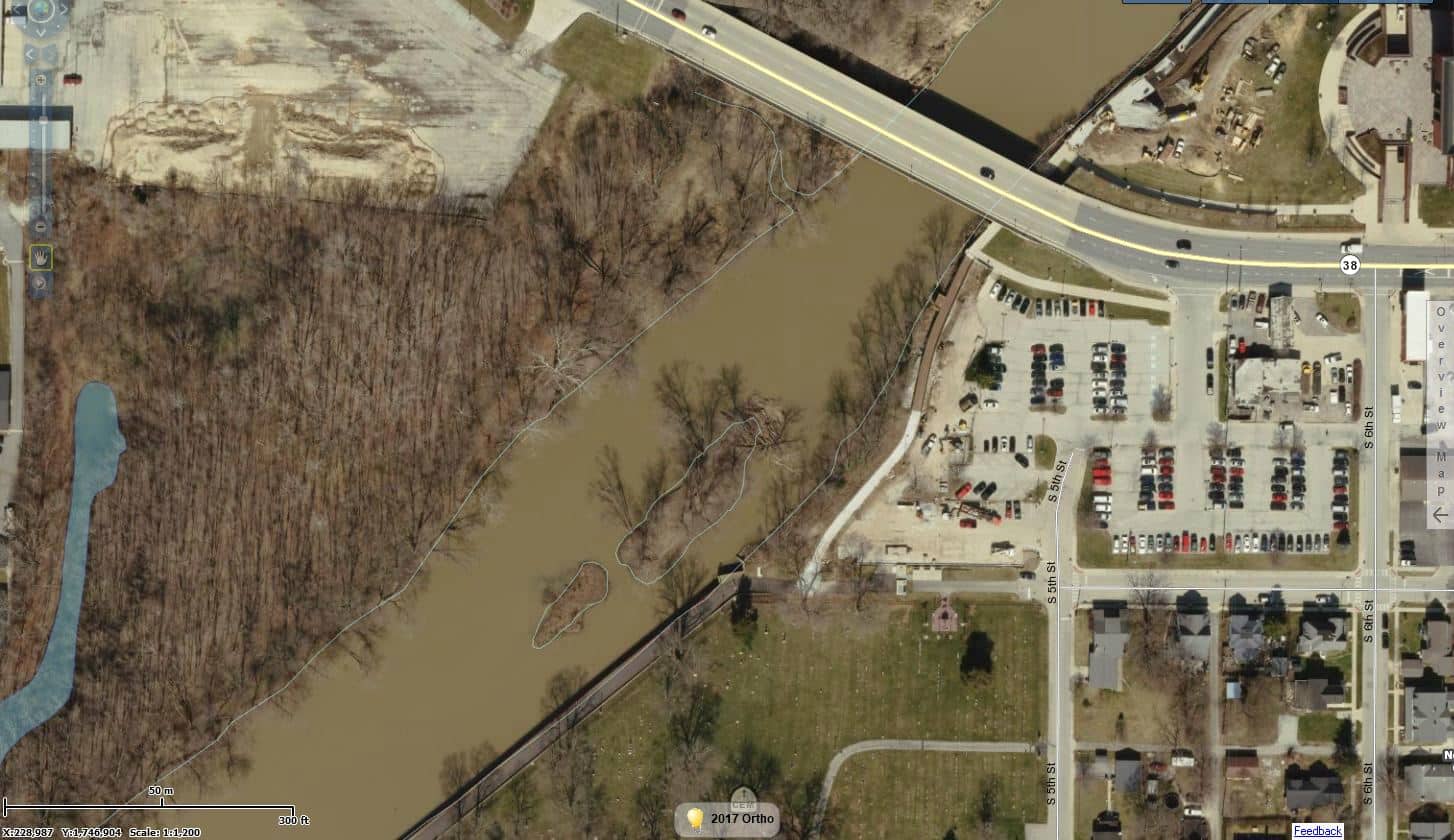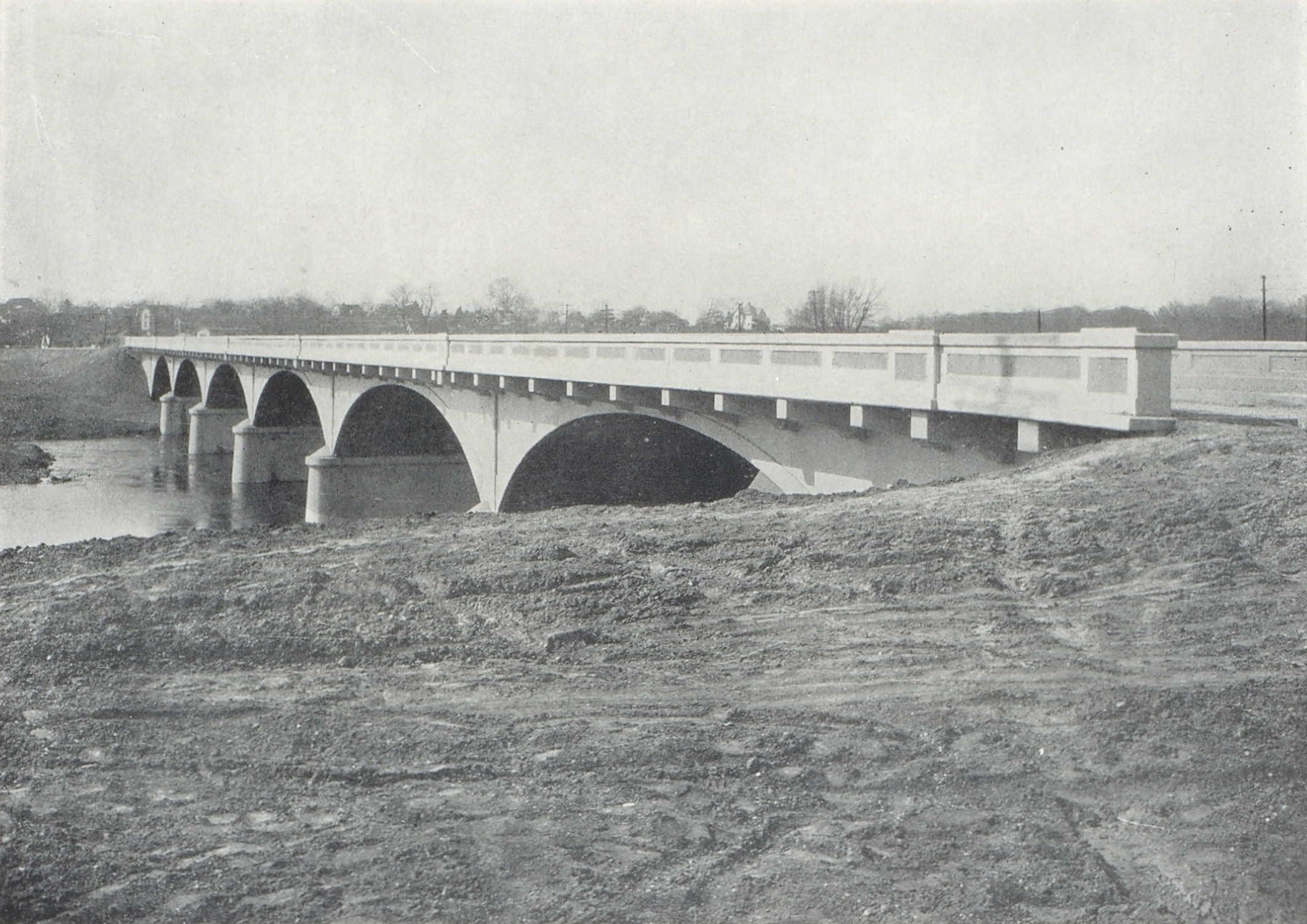 White River Island
White River Island
By: David Heighway, Hamilton County Historian
As the Riverwalk nears completion and the new White River Vision project gets underway, we are doing more exploration of the history of the river and noticing new details. For example, one would presume that the island just south of the Conner Street bridge was created when the bridge was built in 1931 and slowed the flow of water. However, newspaper articles from the 1870s suggest that there was something at that site before then.
The Noblesville Ledger for July 23, 1875, has what is claimed to be a letter from a member of the Ketchum family. The Ketchums were Delaware Indians who stayed in the area for a short time after the rest of the tribe left in 1820. In the letter, this family member, Wykeo Ketchum, discussed the mineral spring that the family used for health, which was somewhere in the area of the present county parking lot. He mentions that “Bathers Island” was directly across from it.
The spring was a famous landmark and was sometimes called the Llewellyn Spring. In another blog post, I discussed the attempts to promote it. However, I can’t find any other mention of a “Bathers Island”. Some other articles in the 1870s refer to a “Jo Ross Island” near town, but don’t give specifics on the location.


I only know of one photograph that shows the area prior to the 1930s. It was taken from the courthouse tower in perhaps the 1880s. A detail is shown here. (The original is number 21 in this part of the Roberts Collection.) The angle might be deceptive, but there doesn’t appear to be an island at that site. Hopefully, we will eventually find more photos.
I’ve created a video using the available photographs, including Google Earth, to show the changes in the island over time. The dates of the images are in the bottom center of the screen. Interestingly, half the island disappeared after the Conner Street bridge was redone and widened in 1991.
The letter was most likely a hoax meant to promote the spring. There is a recently published book called “Ketchum’s Town: the Delaware village in Carmel, Indiana” by Andrew Wright, a copy of which is available in the Indiana Room at the Noblesville library building. The books discusses the Ketchum family and their impact on Hamilton County. Wright did extensive research into the family and found no members named “Wykeo”.
While researching this island, I found some other interesting references to the spring. There was a nasty bit of sarcasm from the Tipton Times in 1877 saying that they had tasted the spring water and suspected the it was a long-forgotten drain from the nearby cemetery.
In 1888, the Ledger printed a poem titled “Cheeseekau – An Indian Tale”, written by local teacher John Haines. It was obviously inspired by Longfellow’s poem Song of Hiawatha. In Haines’ poem, an “Indian maiden” falls in love with a “noble brave” and, when he is injured, she revives him with water from the Noblesville mineral spring. He later dies at the Battle of Tippecanoe and she dies of broken heart when she hears about it. The poem is too long to reproduce here, but I’ll maybe put it in a later post.
As a part of the 400th anniversary celebration of Columbus in 1892, the schools re-enacted his arrival in the New World. A group of high school boys landed a boat near the mineral spring and led a large group of schoolchildren in a parade to the courthouse square. For some reason, they chose October 21st instead of the 12th to stage the event.
The mineral spring was, at one time, an important part of the community. Finding stories like this help bring it back to life.
